Previous Day - Next Day

“Don't judge each day by the harvest you reap, but by the seeds you plant.”
~ Robert Louis Stevenson
Wikiquote (Robert Louis Stevenson (November 13, 1850 – December 3, 1894) was a Scottish novelist, poet, and travel writer, and a leading representative of Neo-romanticism in English literature.)

June 12th, 1381
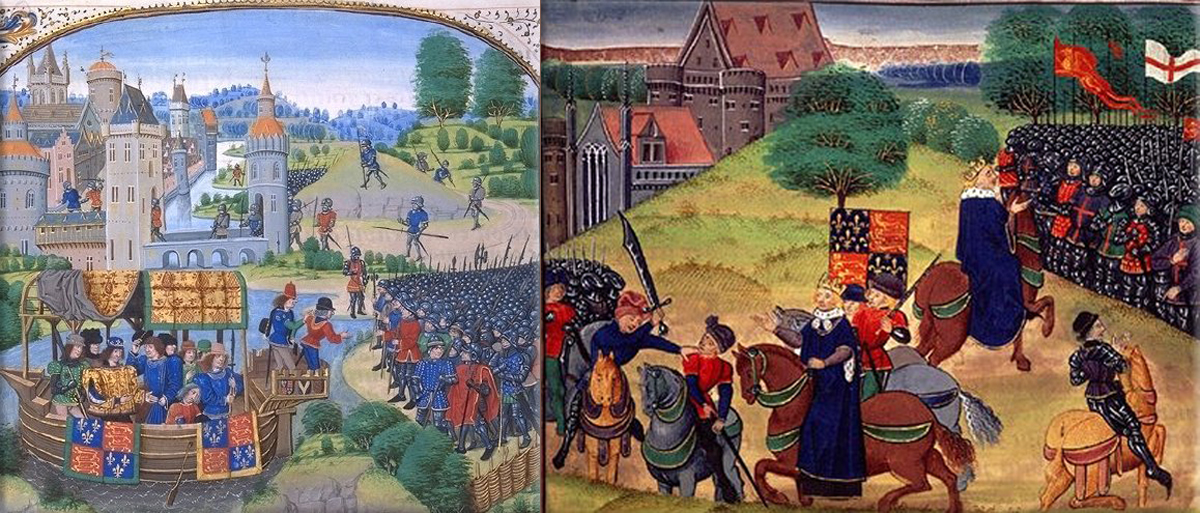
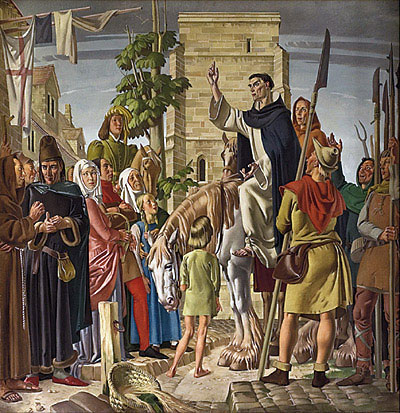
Peasants' Revolt: In England, rebels arrive at Blackheath, London.
Wikipedia Painting: Peasants' Revolt; Richard II meets the rebels in a painting from Froissart's Chronicles ● The end: Wat Tyler killed by Walworth while Richard II watches / Richard ( the king ) addresses the crowd.
Priest John Ball, a leader in the Peasants' Revolt, is hanged, drawn and quartered in the presence of King Richard II of England.
June 12th, 1418
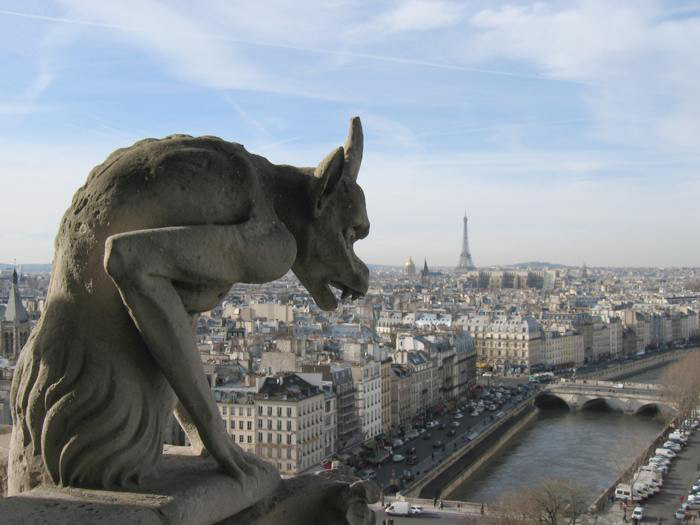
An insurrection delivers Paris to the Burgundians.
Wikipedia Photo: Notre Dame Cathedral in Paris, gargoyle view of Paris.
June 12th, 1429
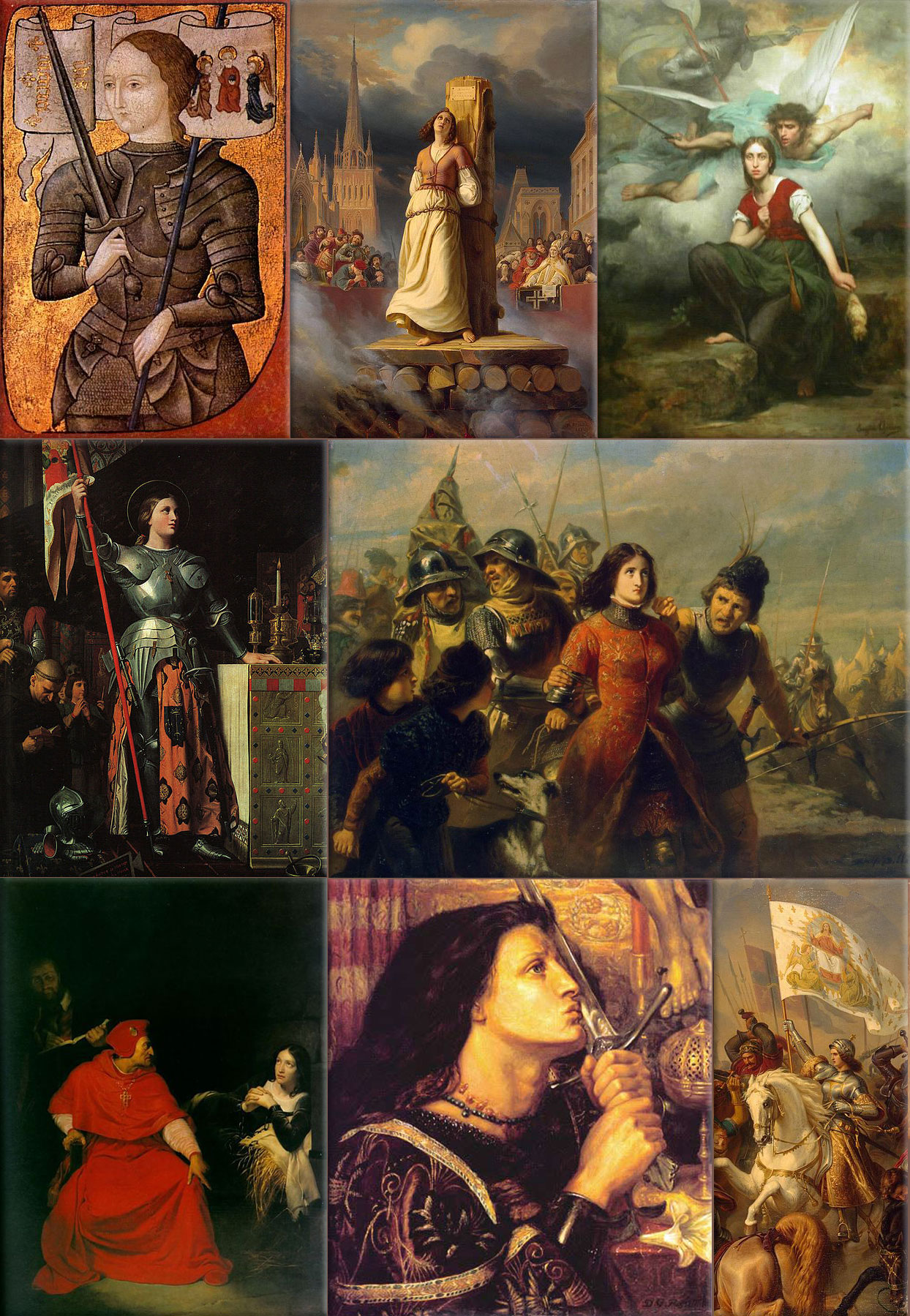
Hundred Years' War, Joan of Arc:
1429 - Joan of Arc leads the French army in their capture of the city and the English commander, William de la Pole, 1st Duke of Suffolk in the second day of the Battle of Jargeau.
Wikipedia Painting: Joan of Arc: An artist's interpretation, since the only known direct portrait has not survived. (Centre Historique des Archives Nationales, Paris, AE II 2490) (1485); Joan of Arc's Death at the Stake, by Hermann Stilke (1843); Jeanne d' Arc, by Eugene Thirion (1876); Joan at the coronation of Charles VII, by Jean Auguste Dominique Ingres in (1854); Joan of Arc and Prophet-French Pilgrimage; Joan interrogated in her prison cell by Cardinal Winchester, by Hippolyte Delaroche, (1824); Saint Joan of Arc, Vatican City; Joan of Arc in Battle, by Hermann Anton Stilke.
June 12th, 1653

First Anglo-Dutch War: Battle of the Gabbard begins and lasts until June 13.
Wikipedia Painting: The Royal Prince and other vessels at the Four Days Fight, 11–14 June 1666 (Abraham Storck) depicts a battle of the Second Anglo–Dutch War.
June 12th, 1665
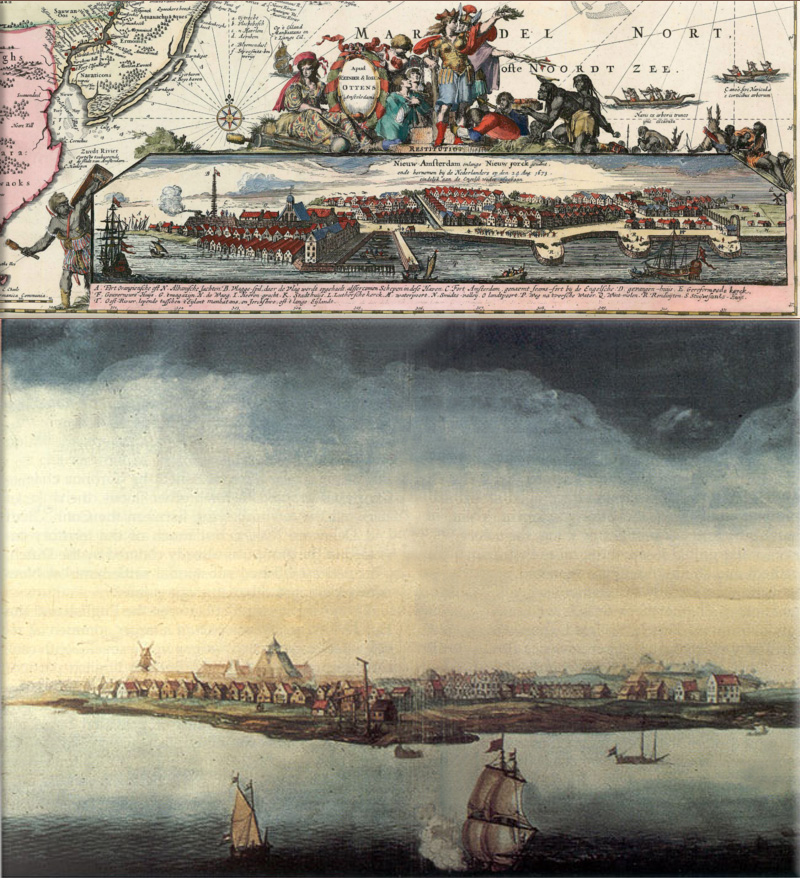
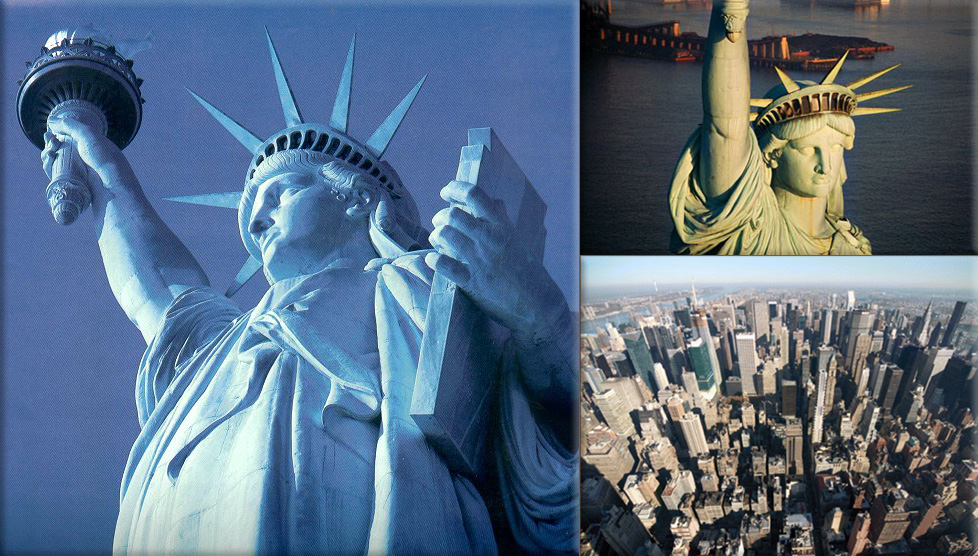
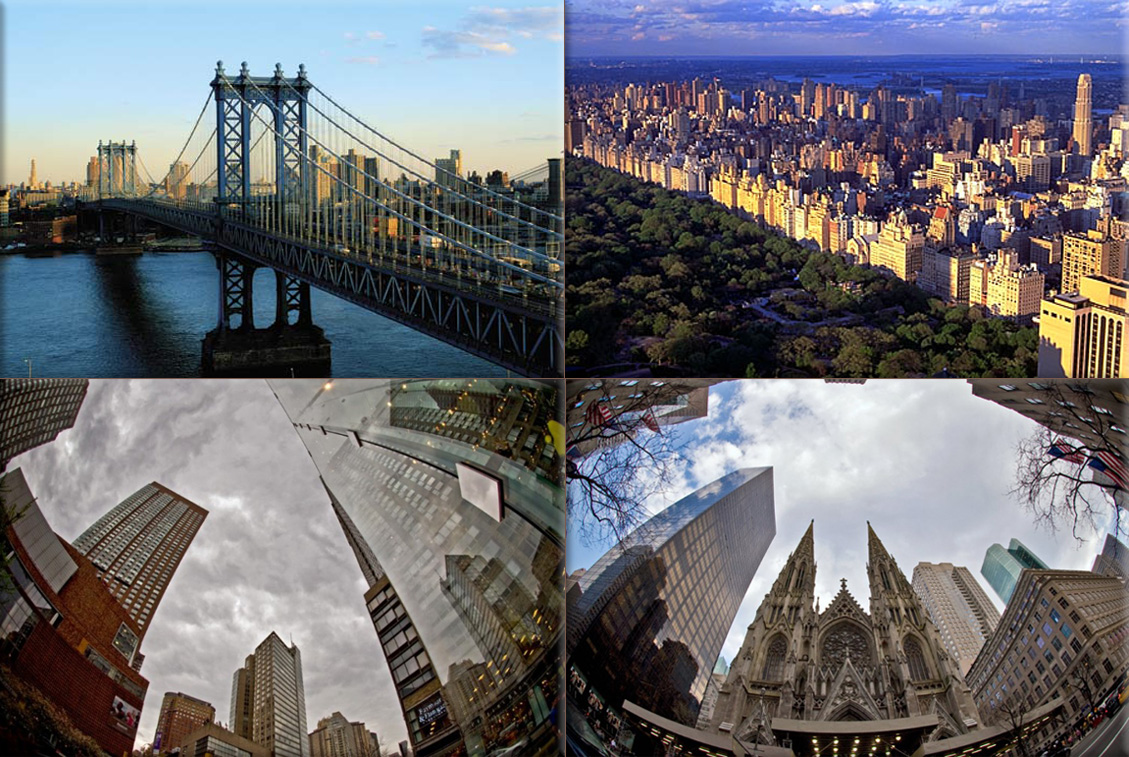
England installs a municipal government in The City of New York (the former Dutch settlement of New Amsterdam).
Wikipedia Painting: New Amsterdam; New Orange, 1674 (looking approximately north; the canal in the centre of the image (today's Broad St.) runs roughly north-south) ● New Amsterdam harbor
Photo: ● Statue of Liberty; Manhattan, New York City, credit National Geographics
● The Manhattan Bridge (completed 1909), spanning the East River between Brooklyn and Manhattan Island, New York City, credit: Larry Brownstein / Getty Images
● Central Park, Manhattan, New York City, flanked by the apartment buildings of the Upper East Side, credit: © Bruce Stoddard—FPG International
● New York city, Manhattan through a fish eye view, credit Victor Barajas Photography.
June 12th, 1758
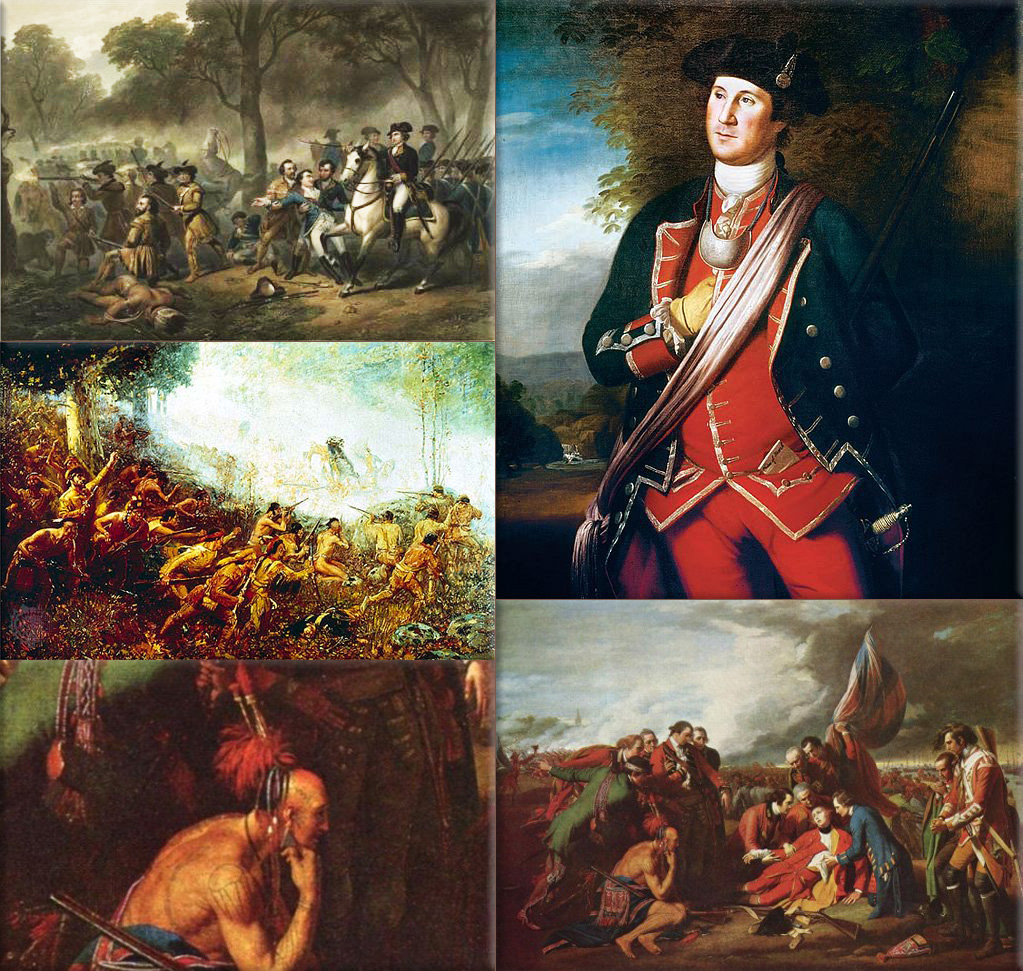
French and Indian War:
1758 - Siege of Louisbourg; James Wolfe's attack at Louisbourg, Nova Scotia commences.
Wikipedia Painting: Major Washington and a wounded General Braddock at the Battle of Monongahela. Lemercier, 1854; Portrait of Washington was painted in 1772 by Charles Willson Peale, and shows Washington in uniform as a colonel of the Virginia Regiment. The original hangs in Lee Chapel at Washington and Lee University in Lexington, Virginia. It is the earliest known depiction of Washington; British troops under Edward Braddock near Fort Duquesne, Pa., during the French and Indian War. Credit: MPI / Hulton Archive / Getty Images; Indian from Death of General Wolfe painting By Benjamin West in 1770; Death of General James Wolfe by stray cannon shot at Battle of Quebec in 1759 Painted by Benjamin West in 1770.
June 12th, 1775
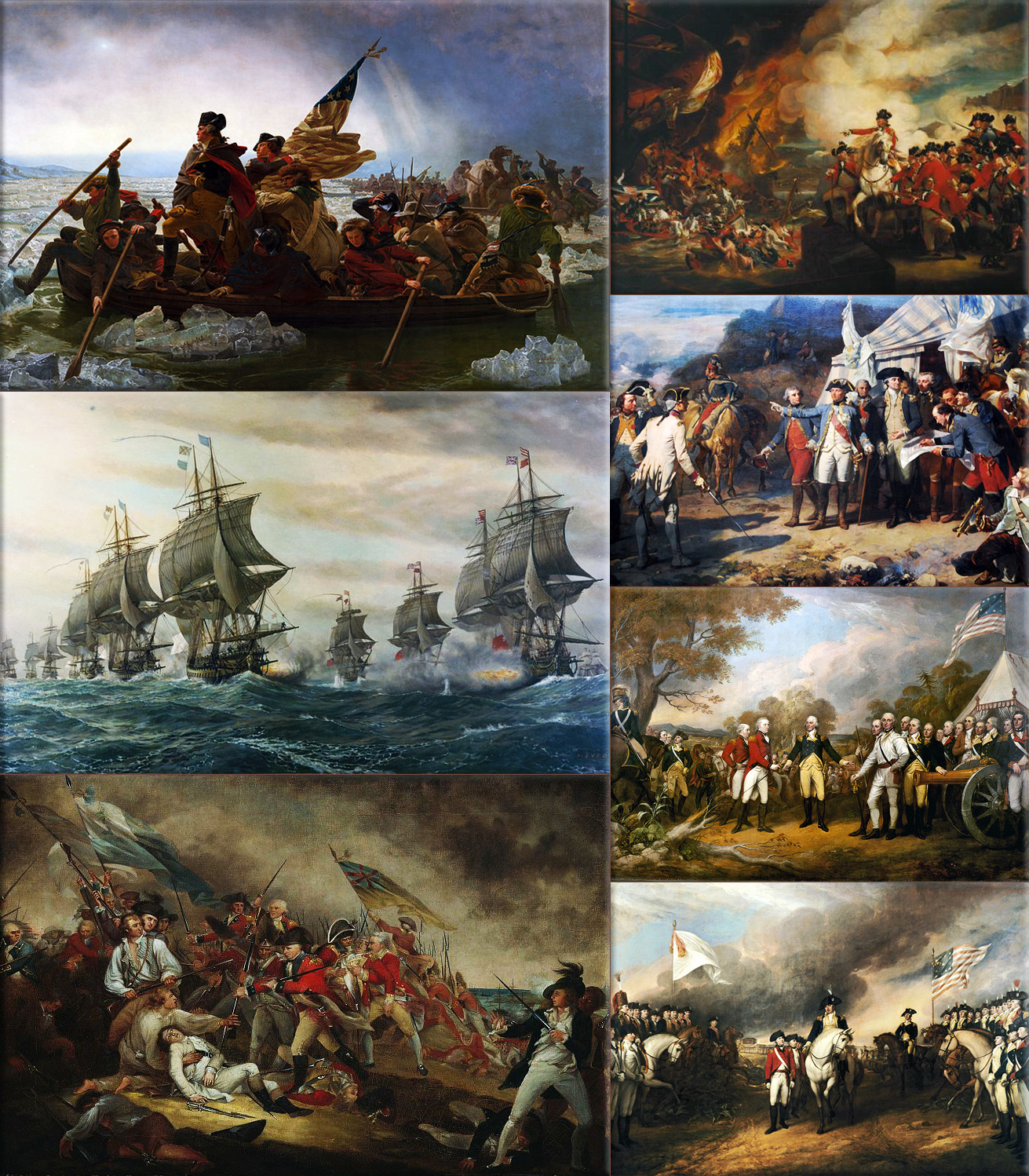

American Revolutionary War:
1775 - British general Thomas Gage declares martial law in Massachusetts. The British offer a pardon to all colonists who lay down their arms. There would be only two exceptions to the amnesty: Samuel Adams and John Hancock, if captured, were to be hanged.
1776 - The Virginia Declaration of Rights is adopted.
Wikipedia Paintings: Washington Crossing the Delaware, by Emanuel Leutz; Battle of the Chesapeake, French (left) and British (right) lines; Battle of Bunker Hill, The Death of General Warren at the Battle of Bunker Hill by John Trumbull; The Defeat of the Floating Batteries at Gibraltar, September 13, 1782, by John Singleton Copley; Washington and the Comte de Rochambeau at Yorktown, 1781; "The surrender at Saratoga" shows General Daniel Morgan in front of a French de Vallière 4-pounder; Surrender of Cornwallis at Yorktown by (John Trumbull, 1797).
● Battle of Cape Saint Vincent, by Thomas Buttersworth (1768-1842).
June 12th, 1798
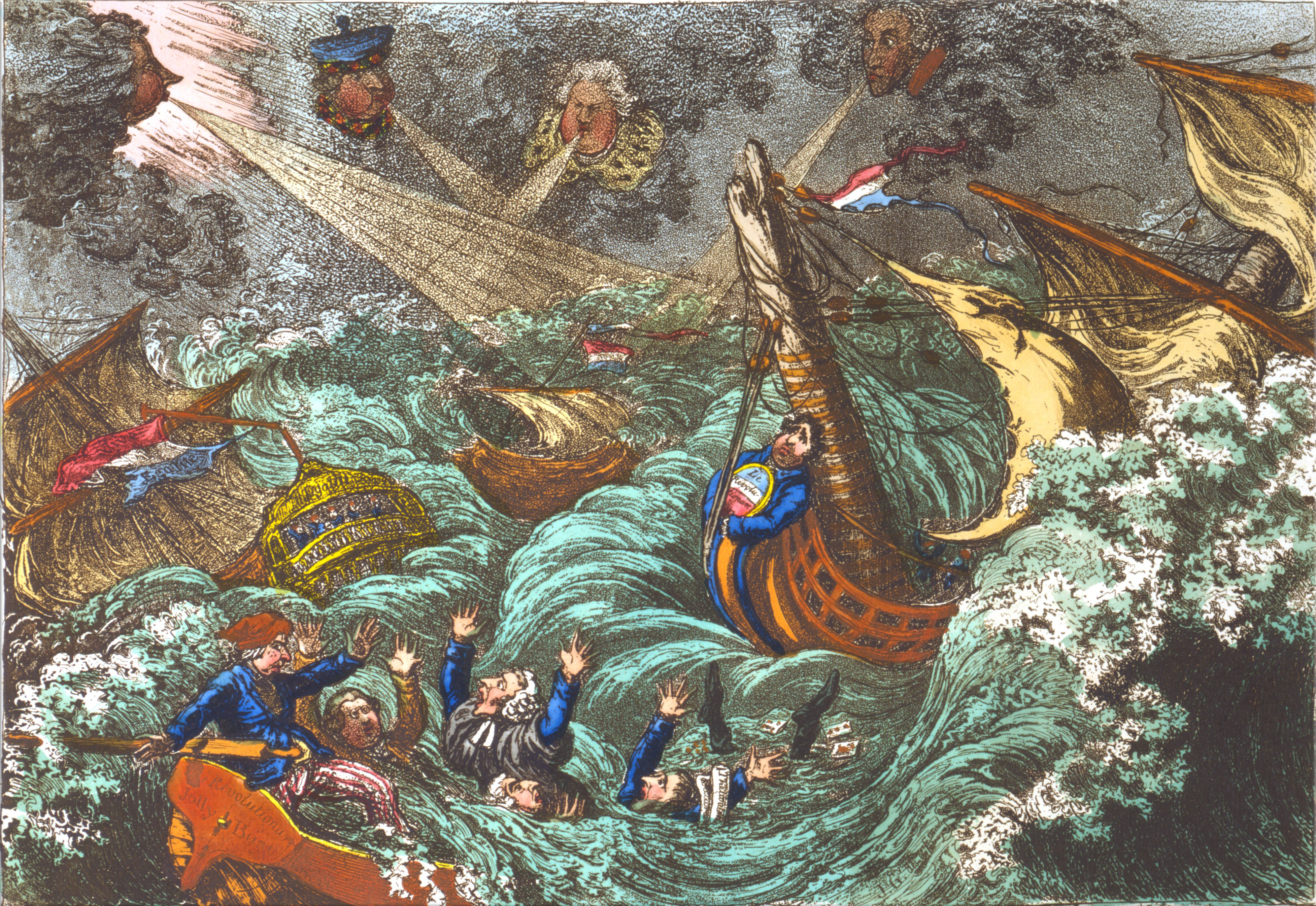
Irish Rebellion of 1798: Battle of Ballynahinch.
Wikipedia Painting: In End of the Irish Invasion; (the Destruction of the French Armada, 1797), James Gillray caricatured the failure of Hoche's expedition.
June 12th, 1864

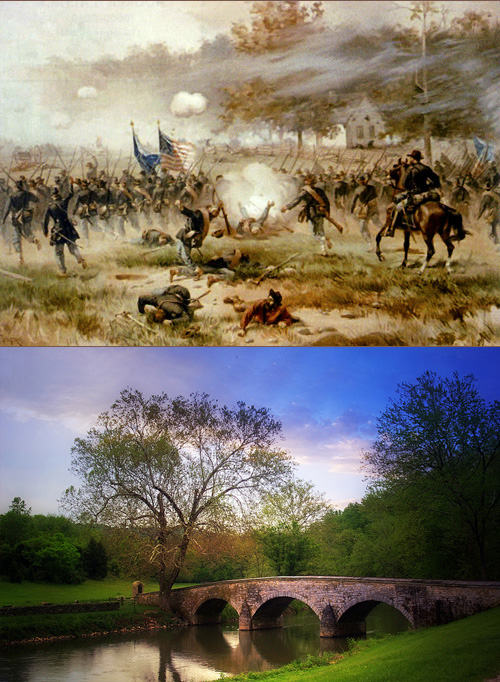
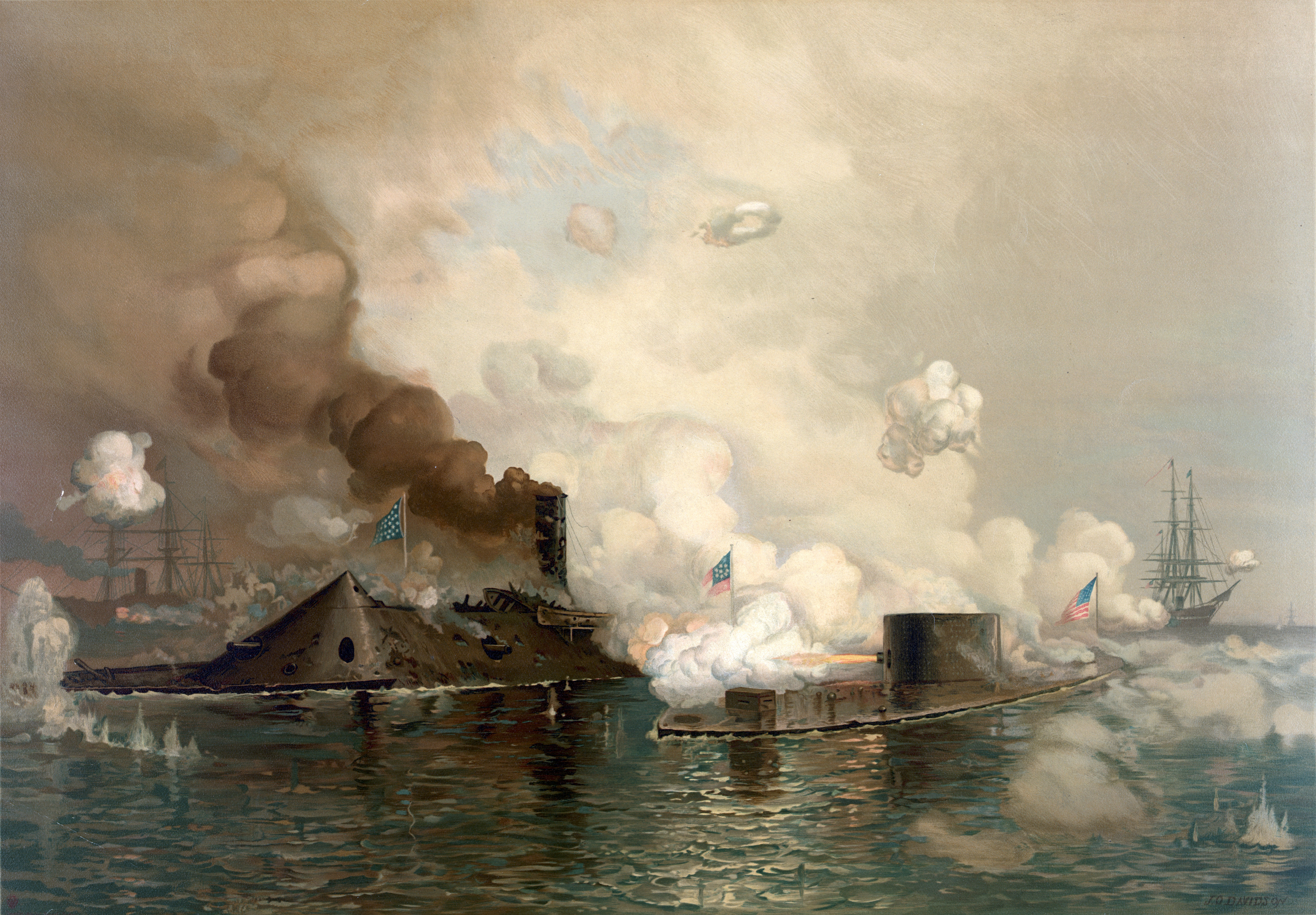
American Civil War:
1864 - Overland Campaign; Battle of Cold Harbor - Union General Ulysses S. Grant gives the Confederate forces under Robert E. Lee a victory when he pulls his Union troops from their positions at Cold Harbor, Virginia and moves south.
Wikipedia Image: ● Lincoln Memorial; an American national monument built to honor the 16th President of the United States, Abraham Lincoln - located on the National Mall in Washington, D.C. across from the Washington Monument.
● The northern army led by George McClellan and the southern army led by Robert E. Lee met at Antietam Creek, Maryland in September, 1862. It was a bloody battle where 13,000 Confederates and 12,000 Union troops died in just one day. McClellan had hesitated to attack before the battle thus letting the southern troops regroup. Also, he had saved reserves and refused to use them at the end of the battle thinking that Lee was holding reserves for a counterattack, even though those reserves didn't exist. The Union victory stopped Lee's northward advance and was a turning point in the war.
● Battle of Antietam / Stone Bridge at Antietam Battlefield - Sharpsburg, Maryland
● First Battle Between Ironclads: CSS Virginia/Merrimac (left) vs. USS Monitor, in 1862 at the Battle of Hampton Roads.
● Although photography was still in its infancy, war correspondents produced thousands of images, bringing the harsh realities of the frontlines to those on the home front in a new and visceral way. The Atlantic.
June 12th, 1880

John Lee Richmond pitched baseball's first perfect game. (A perfect game occurs when no batter reaches a base during a complete game of at least nine innings.)
Wikipedia Image: John Lee Richmond, credit Richmond is perfect © 2001-2013 MLB Advanced Media.
June 12th, 1898
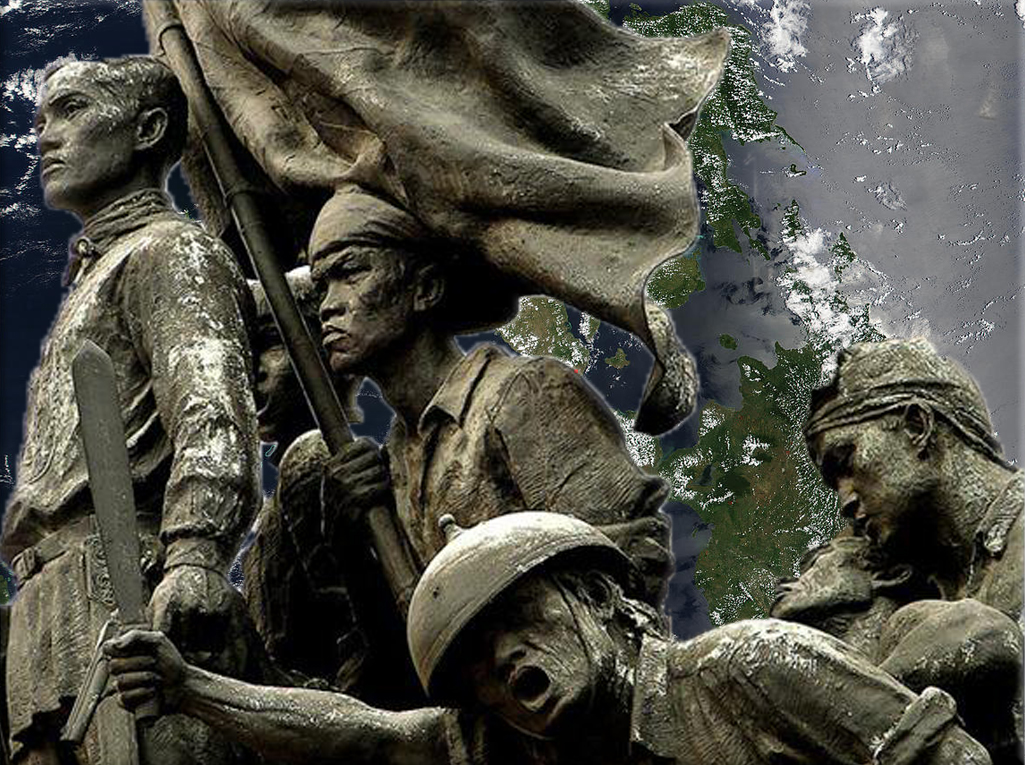
Philippine Declaration of Independence: General Emilio Aguinaldo declares the Philippines' independence from Spain.
Wikipedia Image: Philippine Declaration of Independence from Spain
June 12th, 1899
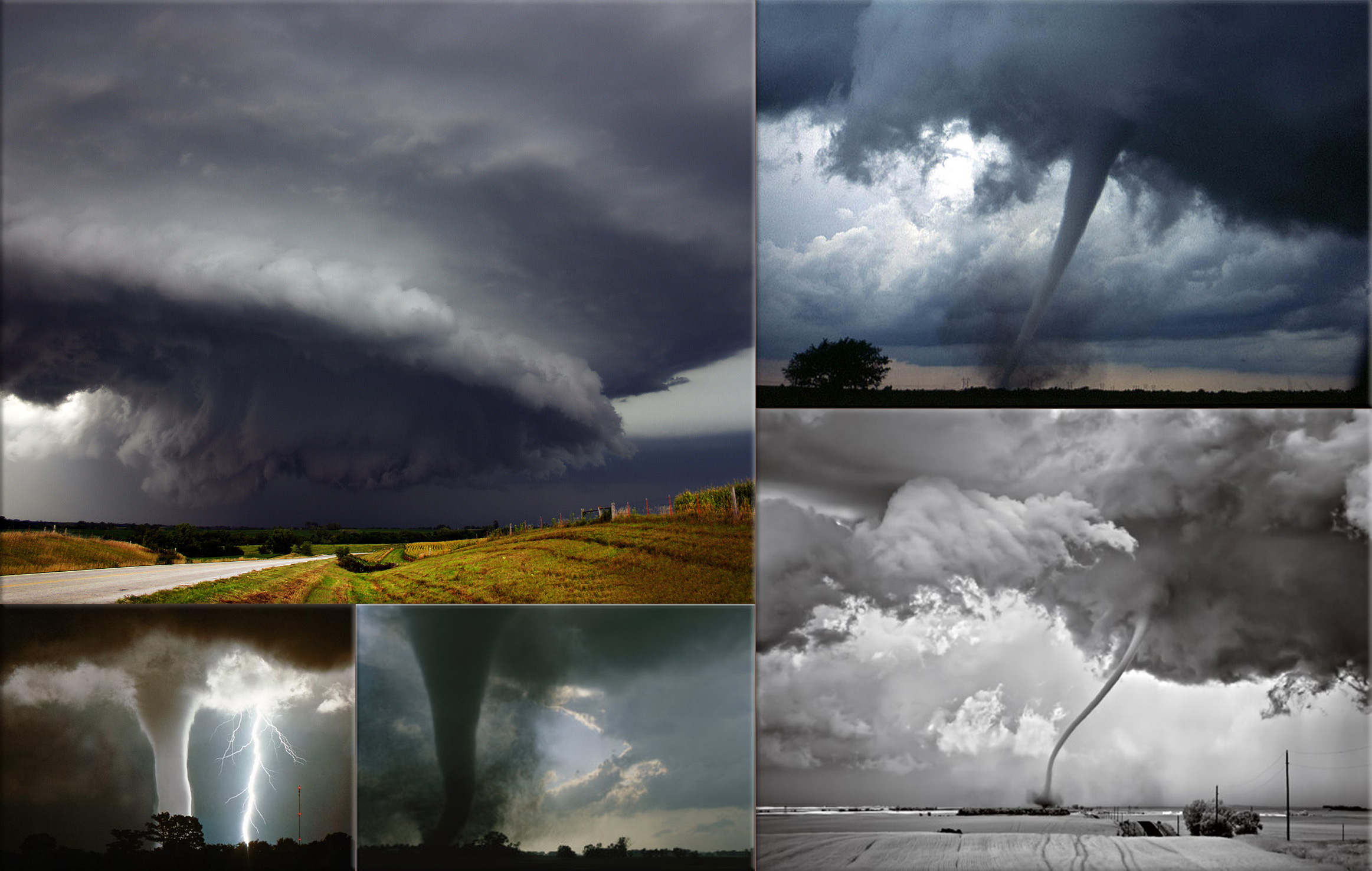
Tornadoes:
1899 - New Richmond Tornado: kills 117 people and injures around 200.
Wikipedia Photo: Weather Front System; Tornado near Anadarko, Oklahoma; North Dakota Tornado; F3 Category Tornado Swirls Across A South Dakota Prairie by Carsten Peter; A waterspout parallels a lightning strike over Lake Okeechobee in Florida, by Fred K. Smith, National Geographics, Extream Instability.
June 12th, 1939

Shooting begins on Paramount Pictures's Dr. Cyclops, the first horror film photographed in three-strip Technicolor.
Wikipedia Image: Paramount Pictures's Dr. Cyclops
June 12th, 1939

The Baseball Hall of Fame opens in Cooperstown, New York.
Wikipedia Photo: The Baseball Hall of Fame and Museum in Cooperstown, New York
June 12th, 1940
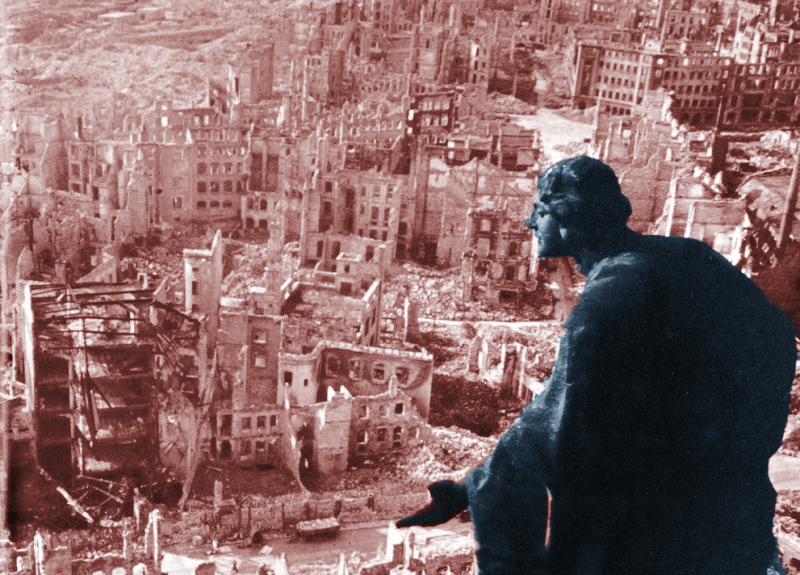

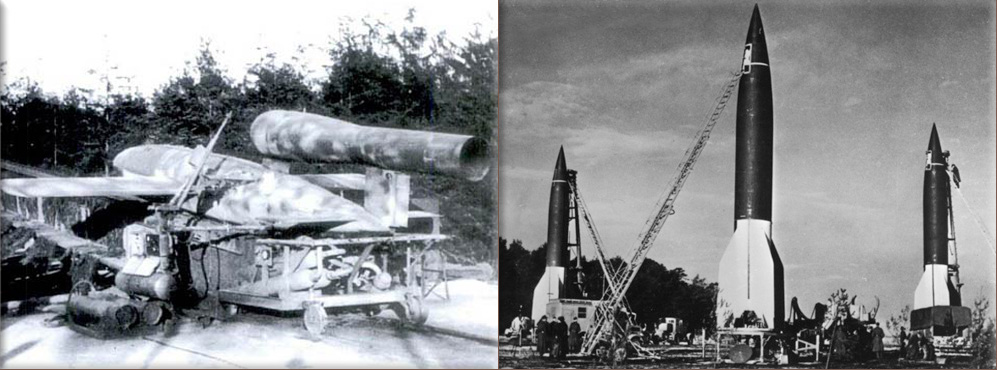
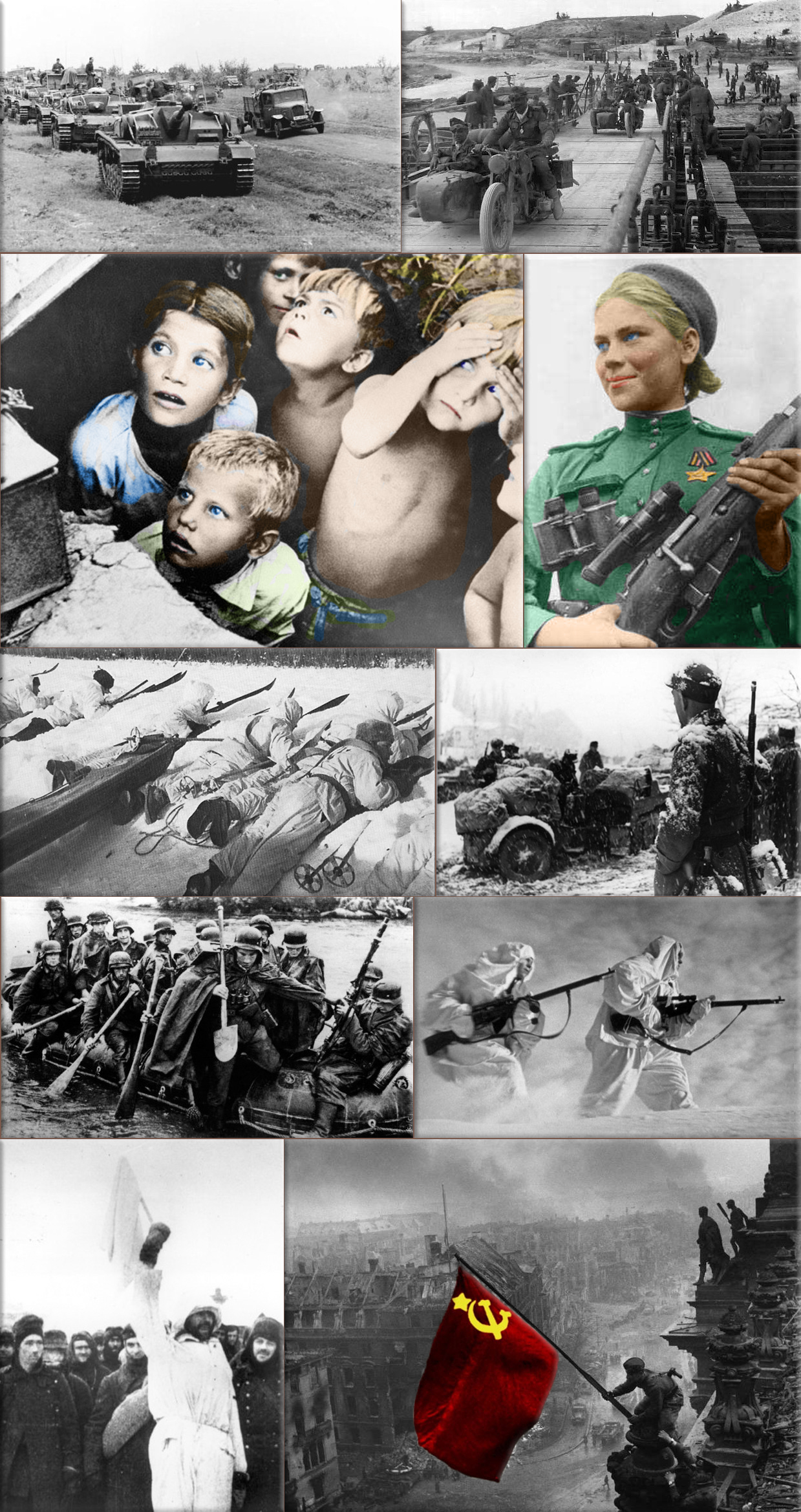
World War II:
1940 - 13,000 British and French troops surrender to Major General Erwin Rommel at Saint-Valery-en-Caux.
1944 - Battle of Carentan: American paratroopers of the 101st Airborne Division secure the town of Carentan.
Wikipedia Photo: Bombing of Dresden in World War II; August Schreitmüller's sculpture 'Goodness' surveys Dresden after a firestorm started by Allied bombers in 1945.
USS Bunker Hill was hit by kamikazes piloted by Ensign Kiyoshi Ogawa and another airman on 11 May 1945. 389 personnel were killed or missing from a crew of 2,600; Ensign Kiyoshi Ogawa, who flew his aircraft into the USS Bunker Hill during a Kamikaze mission on 11 May 1945; Kamikaze Missions - Lt Yoshinori Yamaguchi's Yokosuka D4Y3 (Type 33 Suisei) "Judy" in a suicide dive against USS Essex. The dive brakes are extended and the non-self-sealing port wing tank is trailing fuel vapor and/or smoke 25 November 1944.
German V1 flying-bomb and V2 Rockets - Preparations for a Salvo Launch of V-2 Rockets in the Heidelager near Blizna (Poland) (1944), credit German History in Documents and Images GHDI.
Eastern Front (World War II); Germans race towards Stalingrad. August 1942; Soviet children during a German air raid in the first days of the war, June 1941, by RIA Novosti archive; Soviet sniper Roza Shanina in 1944. About 400,000 Soviet women served in front-line duty units Caucasus Mountains, winter 1942/43; Finnish ski patrol: the invisible enemy of the Soviet Army with an unlimited supply of skis; Men of the German Engineers Corps cross a river which is swollen after the first autumn rains, to strengthen bridges linking the German positions on the central front in Russia. by Keystone / Getty Images. October 1942; Russian snipers fighting on the Leningrad front during a blizzard. Photo by Hulton Archive / Getty Images, 1943; German soldiers surrendering to the Russians in Stalingrad, the soldier holding the white flag of surrender is dressed in white so that there could be no doubt of his intentions, a Russian soldier is on the right of the photograph. by Keystone / Getty Images, January 1943.
June 12th, 1942
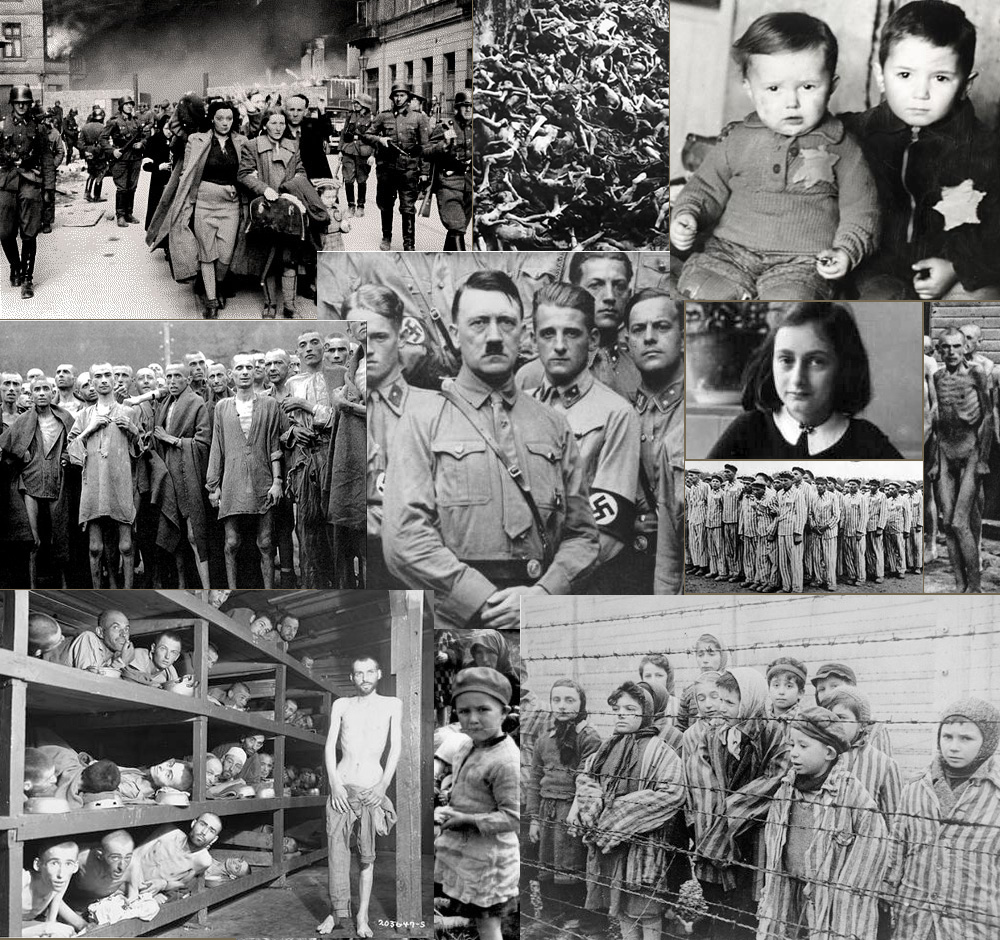
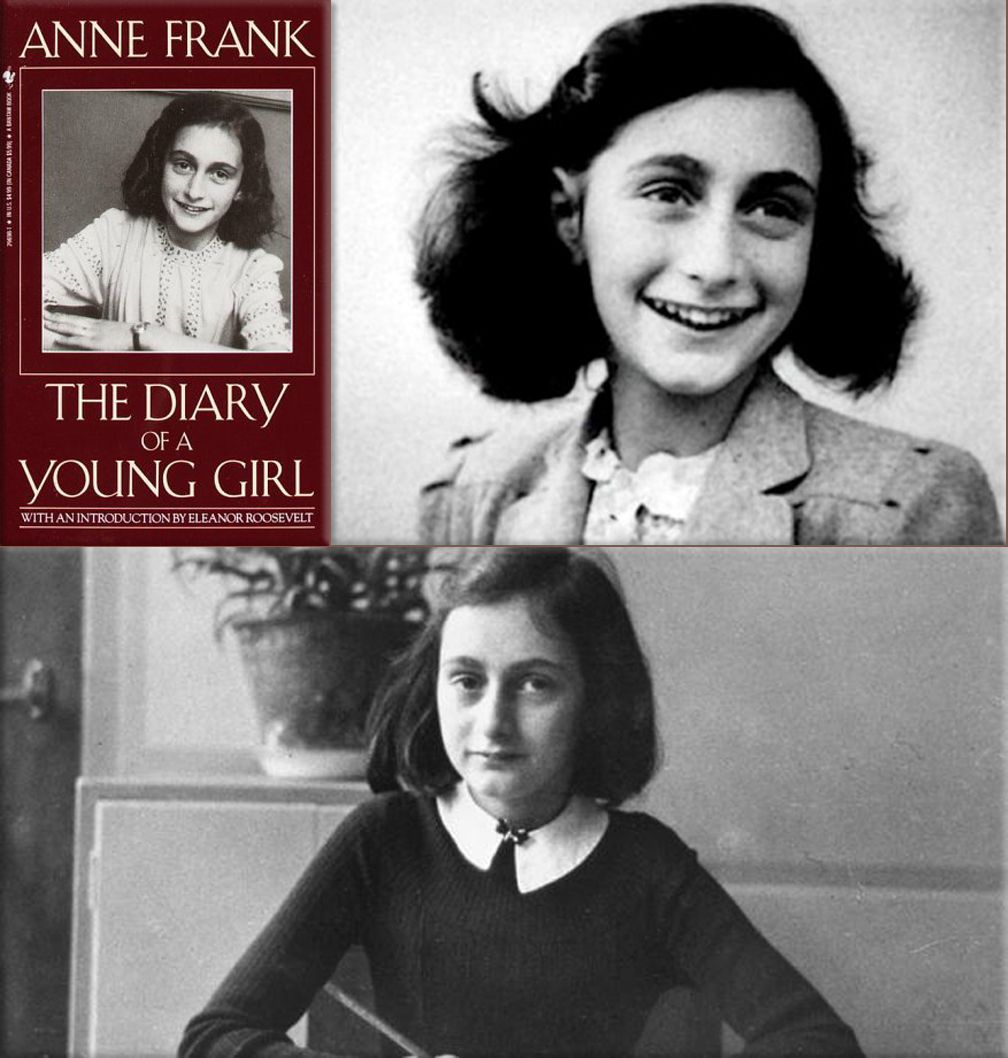
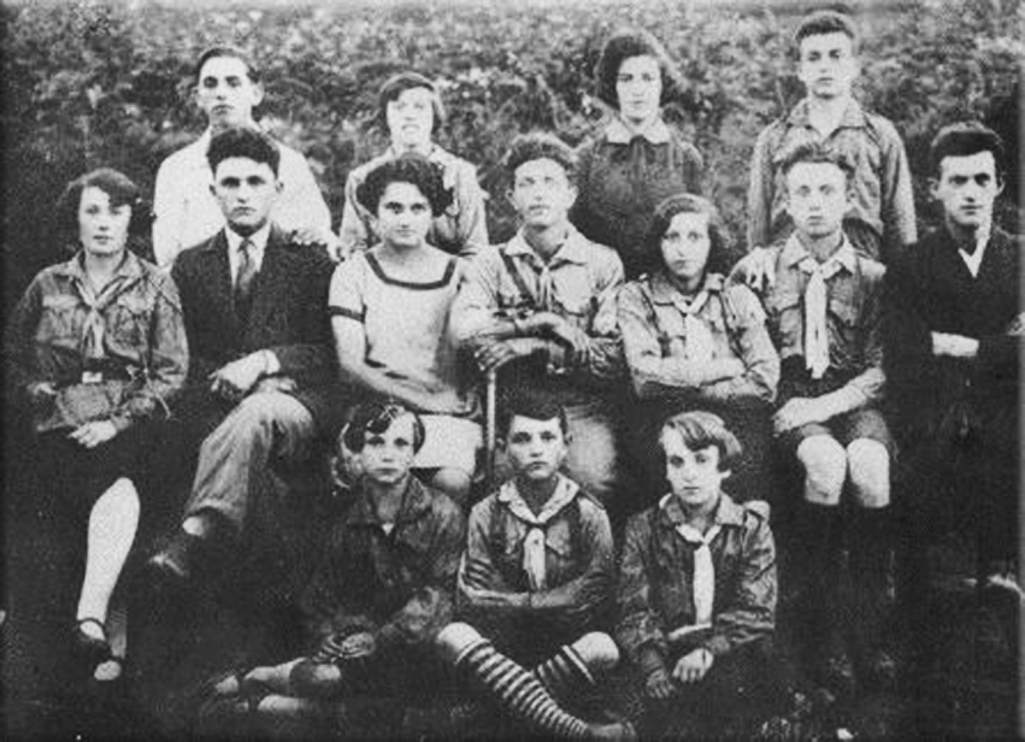
World War II: Holocaust;
1942 - Anne Frank received a diary for her birthday.
1943 - Jewish Ghetto in Berezhany, western Ukraine - where 1,180 Jews are led to the city's old Jewish graveyard and shot by Nazi soldiers
Wikipedia Photo: World War II, The Holocaust. Sources: United States Holocaust Memorial Museum USHMM, History 1900s, Internet Masters of Education Technology IMET, Techno Friends, Veterans Today, Concern. Anne Frank; (Annelies 'Anne' Marie Frank, June 12, 1929 – early March 1945) was one of the most discussed Jewish victims of the Holocaust. (Her diary has been the basis for several plays and films.)
June 12th, 1954
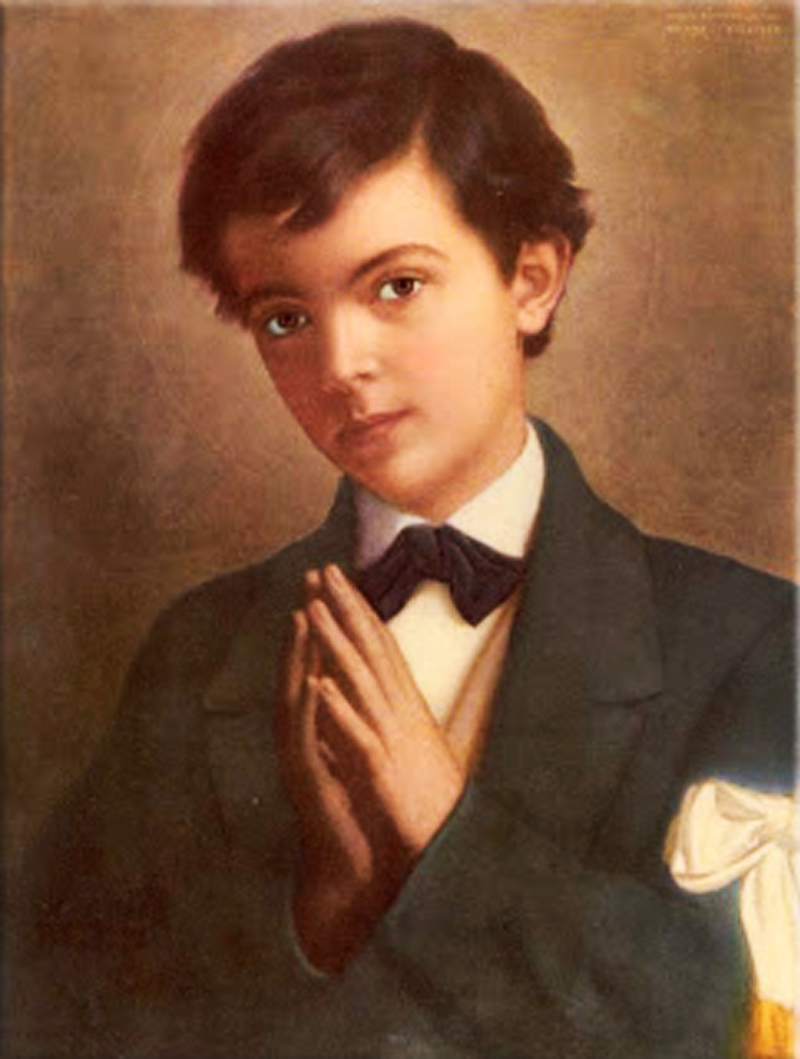
The Pope Pius XII canonises Dominic Savio, who was 14 years old at the time of his death, as a saint, making him the youngest non-martyr saint in the Roman Catholic Church.
Wikipedia Painting: Portrait depicting Dominic Savio.
June 12th, 1962
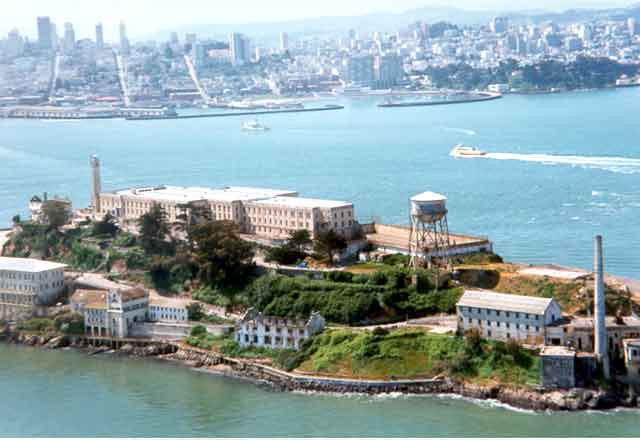
Alcatraz Island: Alcatraz escape; The first civilian prisoners arrive at the Federal prison on Alcatraz Island.
Wikipedia Photo: Alcatraz Island: Alcatraz escape: In 1934, Alcatraz became the first high-security federal penitentiary in the United States. On June 12, 1962, Frank Morris and John and Clarence Anglin vanished, launching the largest manhunt of its time.
June 12th, 1997

Interleague play began in baseball, ending a 126-year tradition of separating the major leagues until the World Series. 
Major League Baseball - MLB.com / Wikipedia Image: Time Magazine
June 12th, 1999
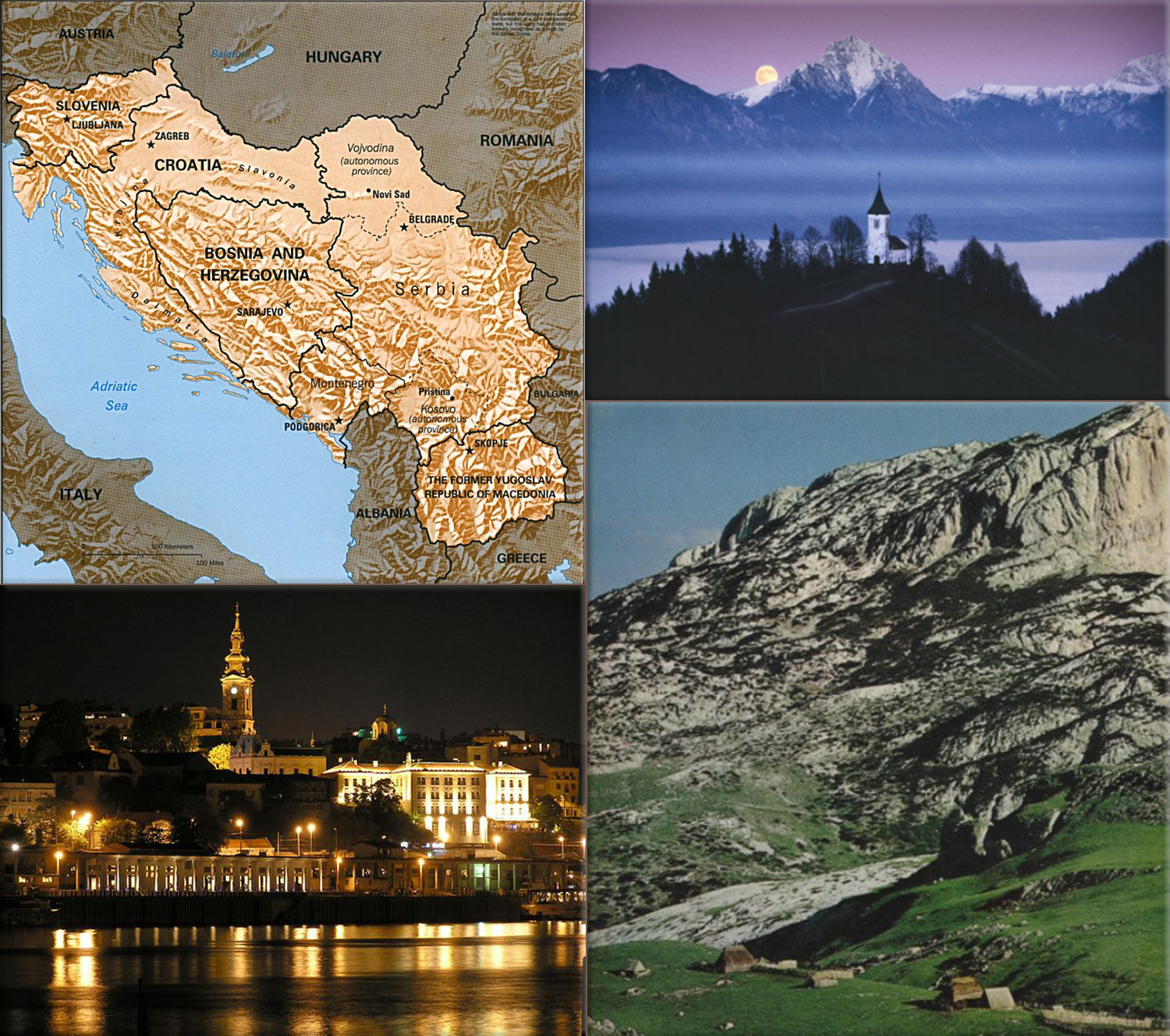
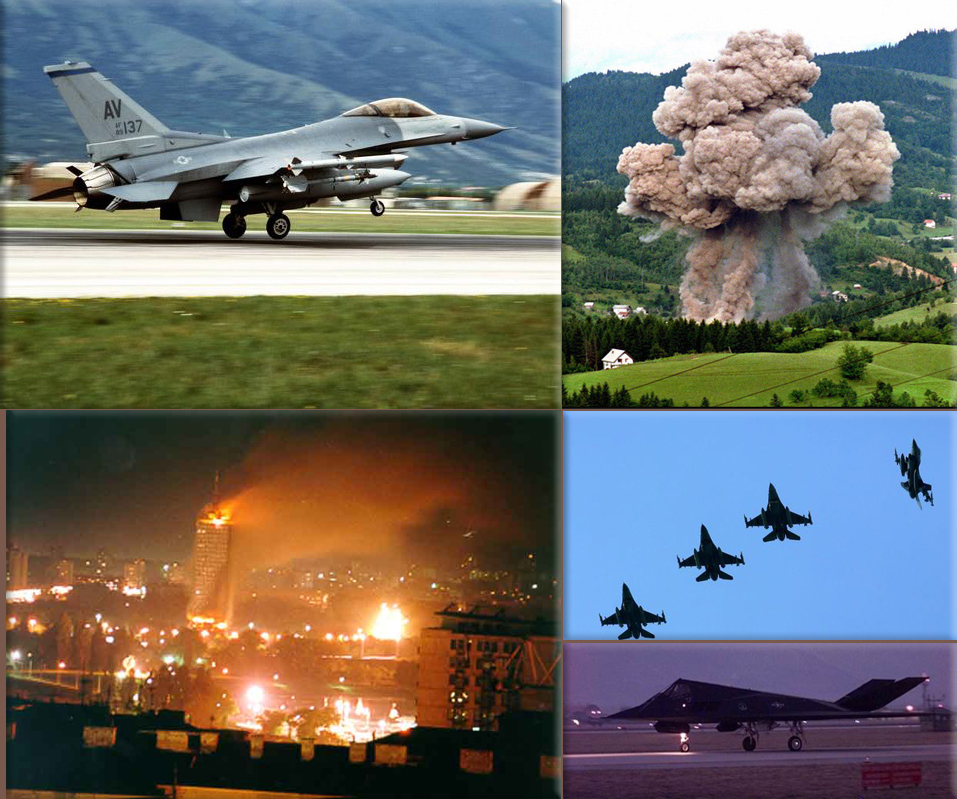
Yugoslav Wars, NATO bombing of Yugoslavia:
Kosovo War; Operation Joint Guardian - NATO-led United Nations peacekeeping force (KFor) enters the province of Kosovo in Federal Republic of Yugoslavia.
Wikipedia Map: Kingdom of Yugoslavia; Belgrade, Yugoslavia; A twilight moon rises above the Kamniske mountains and Slovenia’s Sava River Valley, Slovenia, credit National Geographic; Yugoslavia, November 1977, credit National Geographic.
Photo: 1995 NATO bombing campaign in Bosnia and Herzegovina / Aug. 30, 1995 by Oleg Stjepanovic (AP) ● Smoke rises from an ammunition depot in Bosnian Serb stronghold Pale near Sarajevo after NATO air strikes ● CK building in the moments after bombing ● Serbia marks the 10th anniversary of the Nato-led bombing campaign ● U.S. F-117 Nighthawk taxis to the runway before taking off from Aviano Air Base, Italy, on March 24, 1999.
June 12th, 2016
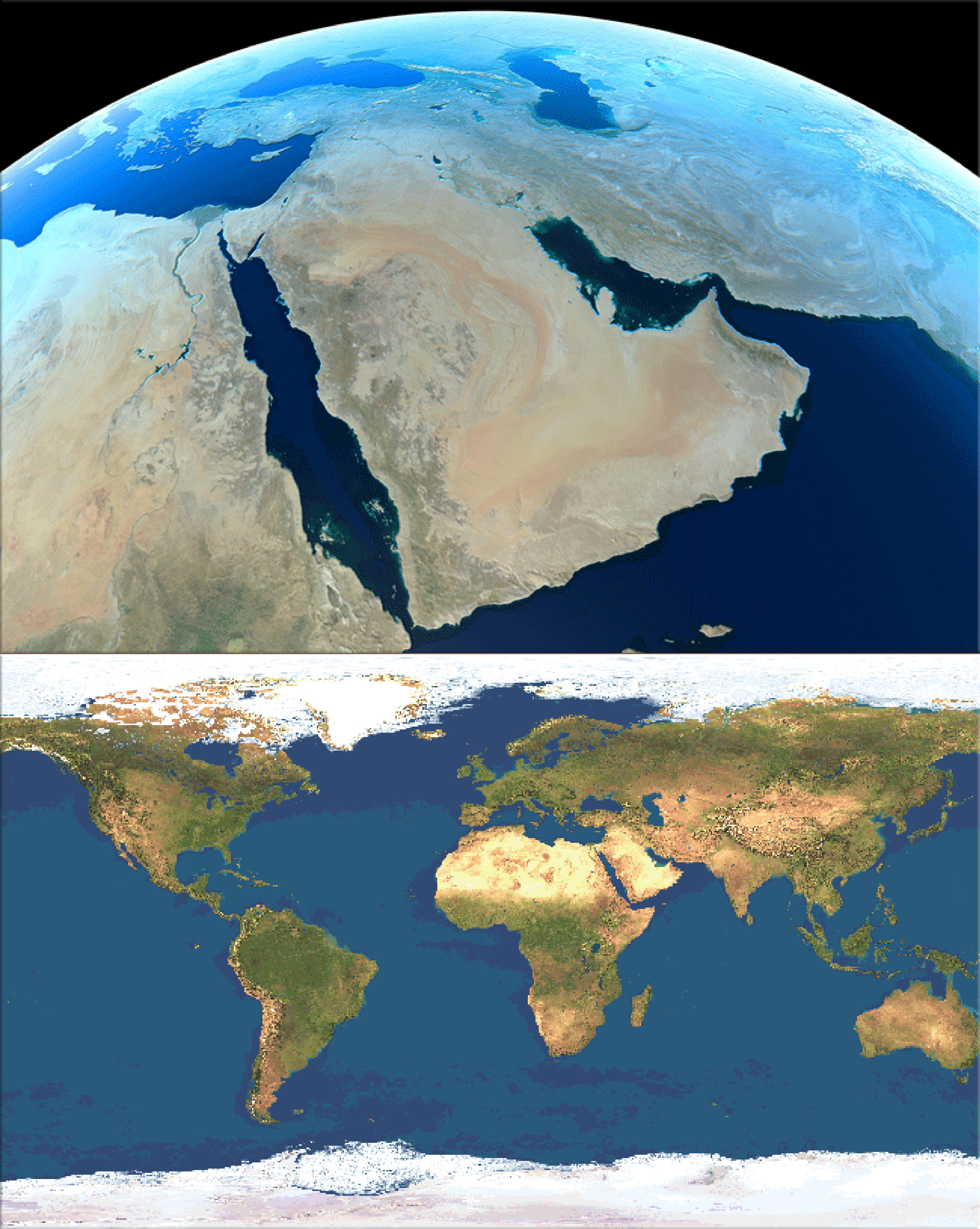
Modern conflicts in the Middle East:
2016 - Orlando nightclub shooting; Forty-nine civilians are killed and 58 others injured in an attack on a gay nightclub in Orlando, Florida; the gunman, Omar Mateen, is killed in a gunfight with police.
2009 - Iranian presidential election; A disputed presidential election in Iran leads to wide-ranging local and international protests.
Wikipedia Image: Middle East satellite image ● World satellite image.
